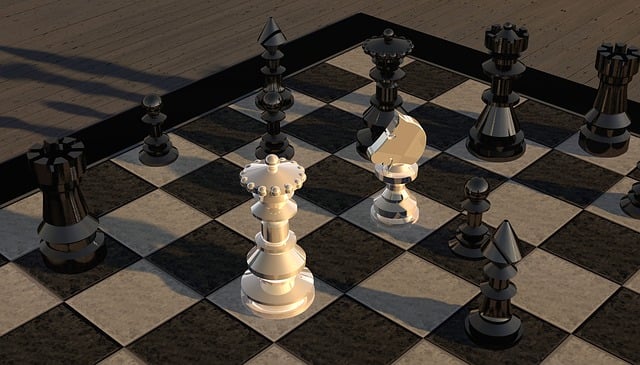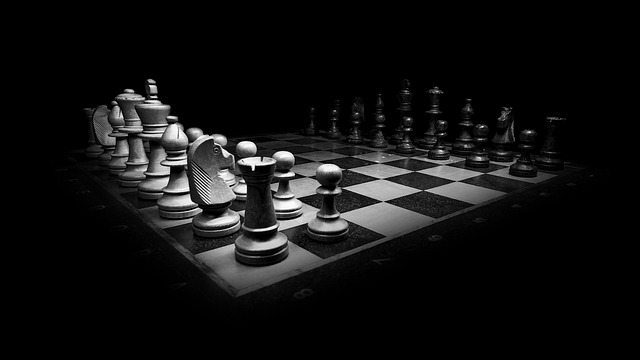Creating an engaging board game involves immersing players in a compelling theme and narrative, aligning it with educational messages like cyberbullying prevention or environmental conservation. Design diverse, cohesive components, establish clear rules, and test rigorously for optimal playability across backgrounds. Focus on high-quality production and innovative packaging to enhance the overall player experience and market appeal.
“Unleash your creativity with our comprehensive guide to crafting a captivating board game. From initial concept to final packaging, this step-by-step journey takes you through every critical aspect. Discover how to conceptualize your game theme and storyline, design an engaging board layout, establish unique rules and gameplay mechanics, and create diverse game elements. Test, refine, and perfect your design before finalizing production and packaging. Let’s bring your dream game to life!”
- Conceptualize Your Game Theme and Storyline
- Design The Game Board Layout and Components
- Establish Rules and Gameplay Mechanics
- Create Cards and Other Game Elements
- Test and Refine The Game Play
- Finalize Production and Packaging
Conceptualize Your Game Theme and Storyline

When conceptualizing your board game, immersing players in a captivating theme and storyline is essential for engaging gameplay. Start by identifying a unique setting or historical event that sparks curiosity and inspires creative writing prompts. Whether it’s a medieval kingdom, futuristic space station, or a re-enactment of significant past events, the theme will shape your game’s identity. Crafting a compelling narrative around this theme is key; include interesting characters, conflicts, and twists to drive player engagement.
Consider how players will interact with the story during gameplay, as collaborative gameplay opportunities can enhance immersion. For instance, incorporate decision points where players’ choices influence the storyline, creating a dynamic experience. By weaving together a rich narrative thread, your board game can offer not just enjoyable gameplay but also an educational or entertaining journey for players eager to explore new worlds and historical event simulations. Remember, the right theme and story can make all the difference in captivating audiences and keeping them engaged throughout their gaming adventure—so give us a call at information literacy training for more insights.
Design The Game Board Layout and Components

Designing the game board layout and components is a crucial step in crafting your board game masterpiece. Begin by envisioning the theme and mechanics of your game. For instance, if your focus is on cyberbullying prevention, incorporate spaces or challenges related to digital citizenship and respectful online interactions. Remember, the board should reflect the core message while keeping players engaged.
Consider the physical components carefully. This includes game pieces, cards, dice, and any other accessories. Think about how these elements will enhance gameplay and cater to different player preferences. For environmental conservation efforts, you might include eco-friendly tokens or tasks that promote sustainability. Integrating STEM curriculum concepts can add an educational twist; consider incorporating mathematical calculations or scientific challenges as part of the gameplay. To ensure a well-rounded design, give us a call at test preparation techniques for expert advice on bringing your game to life.
Establish Rules and Gameplay Mechanics

Establish Rules and Gameplay Mechanics is a pivotal step in crafting your board game. This involves defining how players interact with each other, move their pieces, and ultimately strive to win. Start by outlining the objective of the game—is it to collect the most points, navigate a path, or solve a puzzle? Then, create rules that govern player actions, ensuring they are clear and easy to understand. Consider factors like turn order, player roles, and any special abilities or challenges.
Collaborative gameplay can be enhanced by incorporating elements of personalized education. Design mechanisms that encourage strategic thinking and problem-solving skills, making the game an engaging tool for both entertainment and learning. For instance, you could include educational content within the game’s narrative, or use e-learning platforms to create digital companions that enhance the experience. Visit us at virtual reality education anytime for innovative insights into bringing these concepts to life.
Create Cards and Other Game Elements

Creating cards and other game elements is a crucial step in crafting your board game. Start by designing the core components that will drive gameplay, such as action cards, event cards, or resources. These should align with the game’s theme and mechanics, encouraging strategic thinking and decision-making. Incorporate art and visuals on these cards to enhance player engagement and make the experience more captivating. Consider incorporating digital literacy skills through interactive elements on cards, linking them to online resources for additional challenges or rewards, thus merging traditional board games with modern learning experiences.
Once your initial set of cards is ready, move on to crafting other game pieces like dice, tokens, or a playmat. Ensure these components complement the theme and gameplay mechanics. For instance, if your game involves resource management, create tokens that visually represent different resources. Personalized education can be incorporated here by designing unique token art that aligns with various subjects, encouraging students to engage in project-based assignments through the game. Remember, every element should work together seamlessly to create a balanced and enjoyable gaming experience, and you can always find us at math problem solving for more creative input.
Test and Refine The Game Play

After creating your board game prototype, it’s time to put it through its paces. Test the game with a variety of players from different backgrounds, age groups, and skill levels. Observe how they interact with the game mechanics, enjoy the experience, and solve problems that arise during play. This iterative process is crucial for refining the game design, identifying any issues or imbalances, and enhancing overall gameplay.
Use this testing phase to sharpen your problem-solving techniques and digital research skills. Gather feedback from players, analyze patterns in their interactions, and make adjustments accordingly. Ensure the game is fun, engaging, and accessible for all participants. Consider incorporating elements of budgeting and finance into the game mechanics if relevant, encouraging strategic decision-making and resource management. Give us a call at Budgeting and Finance to discuss further enhancing your board game’s design through playtesting and refinement.
Finalize Production and Packaging

Once your game mechanics and design are finalized, it’s time to bring your board game to life! The next step involves finalizing production and packaging, which will greatly impact how your game is received by players. Start by choosing high-quality materials for both the game pieces and the board itself. Ensure the components are durable enough to withstand repeated play sessions without showing significant wear and tear.
Consider creative ways to package your game, making it not just a functional container but also an experience in itself. Incorporate instructions and any necessary accessories within the packaging. For instance, you could include a quick-start guide or even a few sample scenarios for those players new to your game’s unique mechanics. Remember, first impressions matter! This is where you differentiate yourself from other board games on the market, so think about how you can make your packaging stand out, whether through captivating artwork or innovative folding techniques that reveal the game’s theme and offer a glimpse of its excitement. Additionally, ensure the packaging includes clear instructions for setup and play to guide players, especially those who prefer visual learning aids.
Creating a board game is an exciting journey that requires creativity, planning, and attention to detail. By conceptualizing a unique theme, designing engaging components, and establishing smooth gameplay mechanics, you can craft an immersive experience for players worldwide. Each step from card creation to final production contributes to the overall quality of your game, ensuring it stands out in the crowded market. So, gather your ideas, roll the dice, and get ready to conquer the board game universe!

Leave a Reply